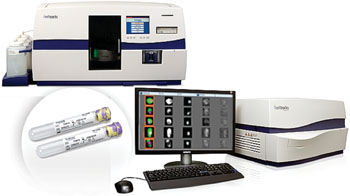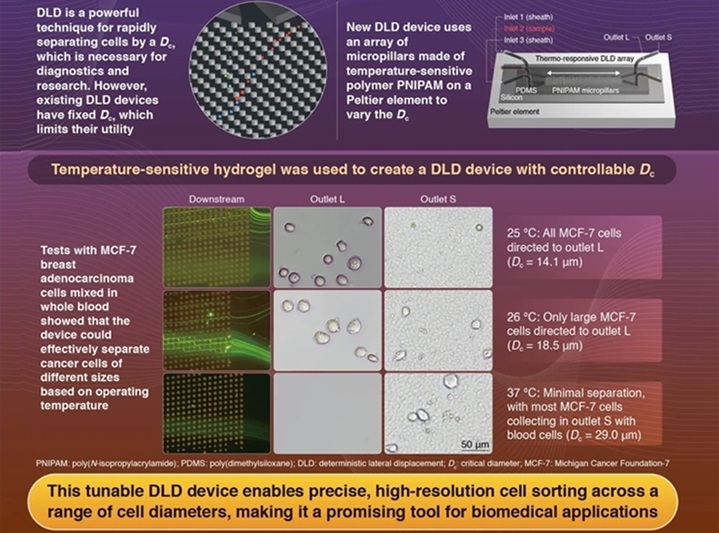Arterial Blood Liquid Biopsy Detects Circulating Melanoma Cells
By LabMedica International staff writers
Posted on 07 Oct 2015
Venous blood collection is simple and minimally invasive, and this approach has made circulating tumor cells (CTC) testing readily available to many cancer patients. The major drawback is the fact that CTCs are not always detectable for patients with clinically evident metastatic disease. Posted on 07 Oct 2015
Currently, assays for CTCs have been approved for diagnostic purposes in metastatic breast, colorectal, or prostate cancer. In these diseases, the presence of CTCs in the peripheral blood is associated with decreased progression-free survival and decreased overall survival. The major challenge for this technology is that CTCs are not always found in the blood of patients with aggressive disease who would be expected to have high numbers.

Image: The CELLSEARCH semi-automatic system that can capture and quantify circulating tumor cells (Photo courtesy of Janssen Diagnostics).
Scientists at Thomas Jefferson University (Philadelphia, PA, USA) obtained blood specimens from both common femoral arteries and antecubital veins in 17 uveal melanoma patients with multiple hepatic metastases for CTC measurements. All patients had their primary uveal melanoma treated between 2000 and 2013. Ten patients had received radioactive plaque as their treatment for primary uveal melanoma and seven patients had enucleation of their affected eye. None of these patients had a local recurrence of primary uveal melanoma at the time of CTC measurement.
CTCs were analyzed using the standard CellSearch protocol and CellTracks Circulating Melanoma Cell Kit on the CellSearch System (Janssen Diagnostics, LLC, Raritan, NJ, USA). Cells expressing CD146 (Mel-CAM) were immunomagnetically enriched and stained with phycoerythrin (PE)-conjugated antibody specific to high molecular weight melanoma associated antigen (HMW-MAA), which is specific for melanoma cells. Samples were scanned on the CellTracks analyzer II fluorescent microscope (Veridex, LLC, Raritan, NJ, USA).
The investigators compared blood samples taken from uveal melanoma patients' veins compared to that collected from arteries, and found a much higher number of circulating tumor cells in blood collected from the arteries than in the veins. CTCs were detectable with greater frequency (100%) and in larger numbers (median 5, range 1 to 168) in all arterial blood specimens than in venous samples (52.9%; median 1, range 0 to 8). Patients with hepatic as well as extra-hepatic metastasis showed higher number of arterial CTCs, compared to patients with liver-only metastasis.
The authors concluded that their data indicated that arterial blood, rather than venous blood, might be suitable for future investigation on CTCs in uveal melanoma patients. This would also raise the concern as to whether venous blood specimens are a suitable source for investigation on CTCs in other types of cancer. Although it is more technically difficult to collect blood from an artery than a vein, this study suggests that checking arterial blood may be a more accurate way of assessing circulating tumor number, and therefore metastatic disease. The study was published on September 18, 2015, in the journal EBioMedicine.
Related Links:
Thomas Jefferson University
Janssen Diagnostics
Veridex









 Analyzer.jpg)




